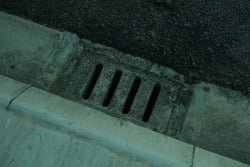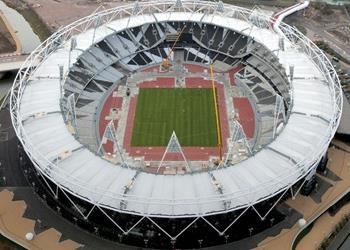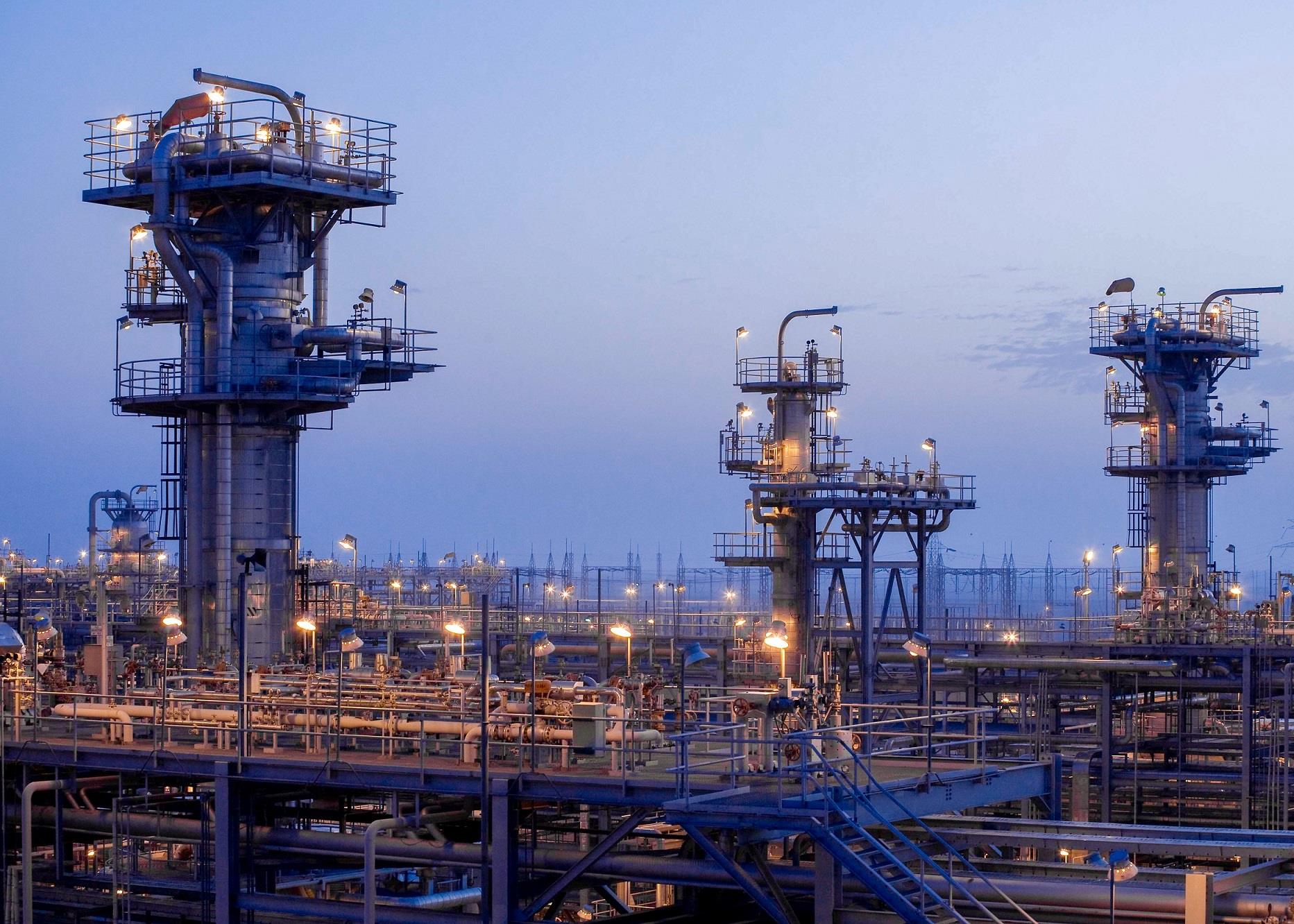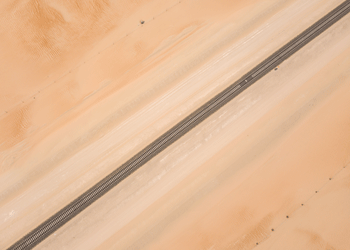Technip Energies leapfrogs the field
23 November 2023

There has been a surge in market activity for the oil, gas and petrochemicals sector in the Middle East and North Africa (Mena) over the past year, with engineering, procurement and construction (EPC) contractors securing $77.6bn-worth of deals between October 2022 and September 2023.
This pace of contract award activity represents a more than doubling of the $37.6bn in awards that were let in the preceding four quarters. It is also reflected in a swelling of the award value that was booked by the top 10 most successful contractors during the period.
These companies secured contract awards totalling $47.2bn in the past four quarters – also more than double the $21.4bn secured by the top 10 contractors by contract value in the period prior.
This surge in activity has also resulted in a significant amount of reshuffling of the regional leaders in terms of recently awarded contract values.
Regional leaders
Topping the ranking is France’s Technip Energies, which clinched pole position with a contract value of $7.6bn over the past four quarters – made up principally by its 70 per cent share in the $10bn contract to deliver two new liquefied natural gas (LNG) trains as part of QatarEnergy’s North Field South expansion programme. This was the second-largest single contract in the Mena oil and gas industry to date.
The remarkable win is a huge boost for the French company, which in the preceding period sat in only 10th place, with awards totalling $922m.
France’s Technip Energies clinched the top position with a contract value of $7.6bn over the past four quarters
Second in this year’s ranking is Hyundai Engineering & Construction from South Korea, with $7.4bn in contract awards, having risen from sixth position the preceding year with just $1.4bn in awards. The firm notably secured two packages worth $2.5bn each from Satorp – the joint venture of Saudi Aramco and TotalEnergies – for the development of the Amiral complex in Jubail.
Hyundai E&C also secured a $2.4bn contract with Saudi Aramco for the phase two, package two utilities and off-site facilities at the Jafurah unconventional gas field in the kingdom’s Eastern Province.
India’s Larsen & Toubro Energy Hydrocarbon (LTEH) has maintained a consistent foothold in the ranking, retaining the third spot for the second year running. It did so with a significantly elevated contract award value, however, at $6.9bn over the past four quarters, as compared to $2.4bn in the preceding period.
LTEH bookings included two more contracts as part of phase two of Aramco’s development of its Jafurah unconventional gas field – a $2.9bn contract for package one, a gas treatment facility, and a $1bn contract for package three, a gas compression plant. LTEH also secured a $1.2bn deal in Algeria for a hydrocracking unit as part of Sonatrach’s Skikda refinery expansion.
Italy’s Saipem has climbed to fourth place with $6.1bn of awards, where previously it came in seventh place with $1.3bn in awards. Its major contracts included the $4.5bn contract for phase two, scope B of the QatarEnergy LNG North Field Production Sustainability programme, and a $1bn contract for the Bouri gas utilisation project with Libya’s Mellitah Oil & Gas Company.
Spain’s Tecnicas Reunidas follows in fifth place, with contracts valued at $5.6bn, rising from ninth place in the previous period, when it secured $1.1bn in awards. The major contract wins in the current period included the $3.6bn contract for Abu Dhabi National Oil Company’s (Adnoc) Maximising Ethane Recovery and Monetisation (Meram) project in a 50:50 joint venture with the local NMDC Energy, formerly National Petroleum Construction Company.
Tecnicas Reunidas also secured two contracts with Aramco for work on the Riyas natural gas liquids fractionation plant, which is part of the second expansion phase of Jafurah: a $2.2bn award for package two and a $1bn award for package one.
Rounding out the top 10
Italy’s Maire Tecnimont claims sixth place with contracts totalling $3.6bn, maintaining its presence in the top ranks with an increased award value, but still down from third position in the previous period, when the firm secured contracts worth $2.6bn.
The contractor’s wins included a $1.3bn deal from a joint venture of QatarEnergy and US firm Chevron Phillips Chemical for the Ras Laffan petrochemicals project and several packages within Satorp’s Amiral complex, totalling $1.92bn. It also secured a $380m contract with Sonatrach for a liquefied petroleum gas extraction plant in Rhourde el-Bagel.
Lebanon’s Consolidated Contractors Company has meanwhile secured the seventh position with contracts valued at $3bn. This was led by its 30 per cent share of the $10bn contract for the QatarEnergy LNG North Field South development and a $400m deal for pipelines as part of Satorp’s Amiral project package 5B.
NMDC Energy has landed in eighth position with contracts worth just under $3bn. Its wins included a 50 per cent share of the $3.6bn contract for Adnoc’s Meram project, working alongside Tecnicas Reunidas, as well as a $614m contract for a pipeline as part of Adnoc’s Estidama project and a $600m contract from Saudi Aramco to lay a pipeline from Zuluf to Safaniya.
The contractor’s position is nevertheless down from last year, when it ranked first with $4.9bn-worth of awards.
China Petroleum Engineering & Construction Corporation secured contracts totalling $2.4bn, earning it ninth place in this year’s ranking. Its wins included a $500m contract for Basra Oil Company’s West Qurna-1 oil field development and a $386m contract for Basra Energy Company’s Mishrif Qurainat oil field development.
UK-based Petrofac rounds off the top 10 with contracts valued at $1.7bn. Wins included a $1bn share of the $1.5bn contract for the Sonatrach Total Entreprise Polymeres joint venture’s propane dehydrogenation polypropylene plant in Arzew, Algeria, and a $700m award for a compressor plant at Habshan as part of Adnoc’s Estidama programme.
Several contractors that were present in last year’s ranking are noticeably absent from this year’s list. These include Japan’s JGC Corporation, which secured no new contracts in the period after posting in second place last year with $4bn in awards.
US firm McDermott secured $1bn in contract awards this year after placing fourth in the ranking last year with $2.6bn in awards. South Korea’s Samsung Engineering meanwhile secured $1.3bn in awards, slightly up from $1.2bn in the previous period, but not enough to remain in the ranking this year.
Sector and country breakdown
The gas sector emerged as the most lucrative sector in the past four quarters, representing contract awards totalling $33.3bn. This was followed by the chemicals sector, which saw $23.3bn in contract awards, and the oil sector, which recorded $21bn.
In terms of the country of origin for contract awards over the past four quarters, Saudi Arabia led the way, representing awards totalling $23.4bn. This was followed closely by Qatar, with awards worth $20.6bn.
Iran also witnessed contracts totalling $11.2bn, but this was split between several local contractors in such a way that it prevented any individual EPC contractor from making its mark at a regional level.
The UAE oil, gas and chemicals market meanwhile recorded $9.2bn in contract awards, with several contracts from Adnoc playing a key role in this year’s ranking.
Algeria, Jordan and Iraq saw total contract awards values of $3.3bn, $3bn and $2.9bn, respectively. Other countries in the region accounted for a further $4bn-worth of EPC contract awards.
Exclusive from Meed
-
 Municipality seeks consultants for Dubailand drainage project
Municipality seeks consultants for Dubailand drainage project10 December 2025
-
 Riyadh prepares Qiddiya National Athletics Stadium tender
Riyadh prepares Qiddiya National Athletics Stadium tender9 December 2025
-
 Contractors submit prices to Adnoc Gas for Ruwais NGL project
Contractors submit prices to Adnoc Gas for Ruwais NGL project9 December 2025
-
 Saudi Arabia and Qatar sign high-speed rail link agreement
Saudi Arabia and Qatar sign high-speed rail link agreement9 December 2025
-
 Oman green hydrogen projects cancelled
Oman green hydrogen projects cancelled8 December 2025
All of this is only 1% of what MEED.com has to offer
Subscribe now and unlock all the 153,671 articles on MEED.com
- All the latest news, data, and market intelligence across MENA at your fingerprints
- First-hand updates and inside information on projects, clients and competitors that matter to you
- 20 years' archive of information, data, and news for you to access at your convenience
- Strategize to succeed and minimise risks with timely analysis of current and future market trends

Related Articles
-
 Municipality seeks consultants for Dubailand drainage project
Municipality seeks consultants for Dubailand drainage project10 December 2025
Register for MEED’s 14-day trial access
Dubai Municipality has invited consultants to prequalify for a contract to provide supervision services on a major drainage infrastructure project serving developed communities in Dubailand.
The sewerage and stormwater drainage project, listed under the code DS-204-S1, is being procured through the government’s Sewerage and Recycled Water Projects Department (SRPD).
The bid submission deadline is 8 January.
The consultancy contract follows the issuance in November of the related construction package, DS-204-C1, for which the municipality invited contractors to prequalify.
The scope includes sewage gravity pipelines with diameters of up to 2,200mm, a sewage lift station with a capacity of three cubic metres a second, and a 1,400mm-diameter sewage rising main that will take pumped sewage from the lift station to the main sewer network.
The bid submission deadline for the construction package is also 8 January 2026.
The tenders form part of Dubai’s wider investment in sewerage expansion, including the $8bn Tasreef programme, for which several projects have moved into the execution phase in recent months.
Once completed, the Tasreef system is expected to increase Dubai’s overall drainage capacity by about 700% and provide daily stormwater treatment capacity exceeding 20 million cubic metres.
 READ THE DECEMBER 2025 MEED BUSINESS REVIEW – click here to view PDF
READ THE DECEMBER 2025 MEED BUSINESS REVIEW – click here to view PDFProspects widen as Middle East rail projects are delivered; India’s L&T storms up MEED’s EPC contractor ranking; Manama balances growth with fiscal challenges
Distributed to senior decision-makers in the region and around the world, the December 2025 edition of MEED Business Review includes:
> AGENDA 1: Regional rail construction surges ahead> INDUSTRY REPORT 1: Larsen & Toubro climbs EPC contractor ranking> INDUSTRY REPORT 2: Chinese firms expand oil and gas presence> CONSTRUCTION: Aramco Stadium races towards completion> RENEWABLES: UAE moves ahead with $6bn solar and storage project> INTERVIEW: Engie pivots towards renewables projects> BAHRAIN MARKET FOCUS: Manama pursues reform amid strainTo see previous issues of MEED Business Review, please click herehttps://image.digitalinsightresearch.in/uploads/NewsArticle/15218750/main.jpg -
 Riyadh prepares Qiddiya National Athletics Stadium tender
Riyadh prepares Qiddiya National Athletics Stadium tender9 December 2025

Register for MEED’s 14-day trial access
Saudi gigaproject developer Qiddiya Investment Company (QIC) is expected to float a tender soon for the construction of the estimated SR7bn ($1.8bn) National Athletics Stadium at its Qiddiya entertainment city development.
MEED understands that the prequalification process has reached an advanced stage and the tender for the main contract is likely to be issued within a few weeks.
The multipurpose stadium will cover an area of approximately 182,000 square metres and its design is inspired by the London Olympic Stadium.
In September, MEED exclusively reported that QIC had begun the procurement process for the kingdom’s next major sporting destination, having received expressions of interest from contractors for the project.
UK-based HOK is the project’s lead design consultant. It is supported by Canadian engineering firm WSP and Germany’s Schlaich Bergermann Partner.
UK-headquartered WT Partnership is serving as the project’s cost consultant.
The stadium will be located within the Qiddiya Sports Park cluster and is expected to be completed by 2030.
In December 2020, Saudi Arabia was selected to host the 2034 Asian Games. The 22nd edition of the event will be held in Riyadh from 29 November to 14 December 2034.
Saudi Arabia is also set to host the Asian Winter Games in 2029. In October 2022, the Trojena development at Neom, in the northwest of the country, was selected to host the ninth edition of the event.
The National Athletics Stadium is one of several major projects within the wider Qiddiya development. Others include an e-games arena, Prince Mohammed Bin Salman Stadium, a performing arts centre, a motorsports track, Dragon Ball and Six Flags theme parks and Aquarabia waterpark.
The project is a key part of Riyadh’s strategy to boost leisure tourism in the kingdom. According to UK analytics firm GlobalData, leisure tourism in Saudi Arabia has experienced significant growth in recent years.
Domestic leisure tourism trips increased to 33.76 million in 2023, up from 16.74 million in 2018. International tourist arrivals for recreational purposes increased by 600% from 2018 to 2023.
Image: Buro Happold
https://image.digitalinsightresearch.in/uploads/NewsArticle/15217660/main.jpg -
 Contractors submit prices to Adnoc Gas for Ruwais NGL project
Contractors submit prices to Adnoc Gas for Ruwais NGL project9 December 2025

Register for MEED’s 14-day trial access
Contractors have submitted commercial proposals to Adnoc Gas for engineering, procurement and construction (EPC) work as part of a design‑update competition for a project to install a fifth natural gas liquids (NGL) fractionation train at its Ruwais gas processing facility in Abu Dhabi.
The fifth NGL fractionation train will have an output capacity of 22,000 tonnes a day (t/d), or about 8 million tonnes a year.
Adnoc Gas, the natural gas processing business of Abu Dhabi National Oil Company (Adnoc Group), has adopted the design-update competition model to deliver the Ruwais NGL Train 5 project, MEED previously reported.
The design-update competition model involves the project operator selecting contractors to execute front-end engineering design (feed) work on the project. The operator selects the contractor with the most competitive feed proposal to execute EPC works on the project, while also compensating the other contestants for their work.
According to sources, contractors participating in the design-update competition for the Ruwais NGL Train 5 project submitted commercial bids for EPC works by the deadline of 8 December.
The previous deadline for price submissions was 30 November, sources said.
Adnoc Gas previously asked contractors to submit their feed technical proposals for the project in September.
In January, MEED reported that Adnoc Gas had selected the following contractors to participate in the design-update competition for the Ruwais NGL Train 5 project:
- JGC Corporation (Japan)
- Technip Energies (France)
- Tecnimont (Italy)
MEED previously reported that participants had submitted technical proposals for feed work on 6 October.
The scope of work on the Ruwais NGL Train 5 project covers the EPC of the following units:
- NGL fractionation plant with a capacity of 22,000 t/d, including NGL fractionation facilities, downstream treatment units, sulphur recovery units, products storage, loading facilities and associated utilities, flares and interconnection pipelines with existing facilities
- Two propane liquefied petroleum gas storage tanks and one paraffinic naphtha storage tank
- Buildings – a central control building, outstations, substations and plant amenities
- Electrical power connections. Power is to be sourced from the nearby Transco substation via a direct underground cable to the plot location.
Adnoc Gas requires the feed on the project to be updated based on the design of Ruwais NGL Train 4, which has an output capacity of 27,000 t/d and was commissioned in 2014.
In December 2021, MEED reported that Adnoc Gas, then operating as Adnoc Gas Processing, had awarded Indian contractor Larsen & Toubro Hydrocarbon Engineering the main contract for a project to enhance the capacity of its NGL trains 1-4 at the Ruwais complex.
ALSO READ: Adnoc Gas capex budget to rise to $28bn by 2029
Adnoc Gas business
Adnoc Group announced the creation of Adnoc Gas through the merger of its subsidiaries Adnoc Gas Processing and Adnoc LNG in November 2022. Adnoc Gas began operating as a commercial entity on 1 January 2023.
The consolidation of Adnoc’s gas processing and liquefied natural gas (LNG) operations into Adnoc Gas has created one of the world’s largest gas-processing entities, with a processing capacity of about 10 billion standard cubic feet of gas a day across eight onshore and offshore sites, which include its Asab, Bab, Bu Hasa, Habshan and Ruwais plants.
The company also owns a 3,250-kilometre (km) gas pipeline network to supply feedstock to its customers in the UAE. This sales gas pipeline network is being expanded to over 3,500km through the estimated $3bn Estidama project.
The company will also acquire its parent Adnoc Group’s 60% share in the Ruwais LNG terminal project at cost in the second half of 2028. UK energy producer BP, Japan’s Mitsui & Co, UK-based Shell and French energy producer TotalEnergies are the other shareholders in the project, holding 10% stakes each.
Adnoc Gas share sale
In February 2025, Adnoc Group completed a marketed offering of approximately 3.1 billion shares in Adnoc Gas, raising $2.8bn from the exercise.
The offering consisted of 3,070,056,880 shares, representing 4% of the issued and outstanding share capital of Adnoc Gas.
Following the marketed offering of shares, Adnoc Group continues to hold the majority 86% of shares in Adnoc Gas.
The parent entity listed 5% of Adnoc Gas’ shares on the Abu Dhabi Securities Exchange in March 2023, in an initial public offering from which it raised about $2.5bn.
Abu Dhabi National Energy Company (Taqa) owns the remaining 5% shares in Adnoc Gas.
https://image.digitalinsightresearch.in/uploads/NewsArticle/15217598/main2533.jpg -
 Saudi Arabia and Qatar sign high-speed rail link agreement
Saudi Arabia and Qatar sign high-speed rail link agreement9 December 2025
Register for MEED’s 14-day trial access
Saudi Arabia and Qatar have signed an agreement to build a proposed high-speed rail line connecting Riyadh and Doha.
The agreement was signed by Saudi Arabia's Transport & Logistics Services Minister, Saleh Al-Jasser, and Qatar's Transport Minister, Sheikh Mohammed Bin Abdulla Bin Mohammed Al-Thani.
The high-speed railway line will cover 785 kilometres (km) and will pass through Hofuf and Dammam, while also linking King Salman International airport and Hamad International airport.
The train's speed will exceed 300 kilometres an hour, reducing travel time between the two capitals to about two hours.
The project is slated for completion in six years. The project is expected to serve over 10 million passengers annually and create more than 30,000 direct and indirect jobs.
Riyadh and Doha relaunched a proposed rail link connecting the two countries in 2022, after agreeing to set a date to begin studying the connection.
In July of that year, France’s Systra was selected to conduct a feasibility study on the proposed scheme, as MEED reported.
A rail link connecting Saudi Arabia and Qatar was planned before the diplomatic dispute that froze relations between Riyadh and Doha from 2017 until the Al-Ula Declaration was signed in January 2021.
In 2016, Qatar Railways Company (Qatar Rail) was planning to tender the design-and-build contract for the construction of regional railways in Qatar, including the link connecting to the Saudi border.
https://image.digitalinsightresearch.in/uploads/NewsArticle/15217463/main.gif -
 Oman green hydrogen projects cancelled
Oman green hydrogen projects cancelled8 December 2025
Hydrogen Oman (Hydrom), France’s Engie and South Korea’s Pohang Iron & Steel Company (Posco) have cancelled plans to move forward with the $6.7bn HyDuqm green hydrogen project.
In a joint statement, the firms said they had reached a decision to end the scheme by mutual consent following an “in-depth assessment” of global renewable hydrogen offtake dynamics and investment frameworks.
The HyDuqm scheme was one of the largest green hydrogen projects awarded under Oman’s first auction round in 2023.
The proposed development included around 5GW of combined solar and wind capacity, supported by battery energy storage, to power an electrolysis plant producing hydrogen for conversion into green ammonia.
The facility was expected to deliver up to 1.2 million tonnes of green ammonia a year by 2030, with Posco as the main offtaker to support the decarbonisation of its steel operations.
The consortium, led by Posco (28%) and Engie (25%), had secured a 47-year concession with the state-owned Hydrom to develop a 320-square-kilometre site near the Port of Duqm.
Samsung Engineering, Korea Southern Power and Korea East-West Power had a 12% stake, with Thailand’s PTTEP holding the remaining 11%.
As recently as May, the partners were still targeting a final investment decision in 2027, subject to detailed economic and technical feasibility assessments.
Separately, a second Hydrogen project in the same area, owned by the UK’s BP, has also been cancelled. BP withdrew its plans for the Duqm green hydrogen project, which had secured land rights for the 1.5GW facility.
Hydrom managing director, Abdulaziz Al-Shidhani, told the 2025 Green Hydrogen Summit in Oman last week that only seven of the nine original projects that won land tenders were progressing.
Wider slowdown
The cancellations come amid a broader slowdown in green hydrogen development globally. Several major schemes have been postponed, scaled back or withdrawn as project economics have tightened.
In Europe, more than one-fifth of planned hydrogen projects had been stalled or cancelled by the end of 2024, according to research and consultancy firm Westwood Global Energy, largely due to high costs, uncertain demand and slow progress securing long-term offtake.
A similar trend has emerged in the GCC, where Saudi Arabia’s flagship Neom green hydrogen project has also faced offtake and market pressures despite reaching an $8.4bn financial close in 2023.
The 4GW scheme, designed to produce about 1.2 million tonnes a year of green ammonia, has reportedly struggled to secure multiple international buyers, with only limited offtake confirmed to date.
Hydrogen production costs
Global green hydrogen production costs also remain significantly higher than conventional alternatives, typically in the range of $3-$8 a kilogram compared with roughly $0.5-$2/kg for hydrogen produced from fossil fuels, leaving large export-oriented projects exposed to pricing and demand uncertainty.
The combination of elevated capital costs, slow offtake development and evolving policy frameworks has created headwinds for investment decisions across the sector.
In the joint statement, however, Hydrom said it is committed to “developing a competitive hydrogen-centric economy” aligned with Oman’s Vision 2040.
It added that projects awarded in the first two auction rounds are progressing on schedule towards the country’s target of producing more than one million tonnes a year of green hydrogen by 2030.
The company also highlighted continued international interest in the sector, noting that the third auction round is under way with strong foreign participation.
https://image.digitalinsightresearch.in/uploads/NewsArticle/15214080/main.jpg


